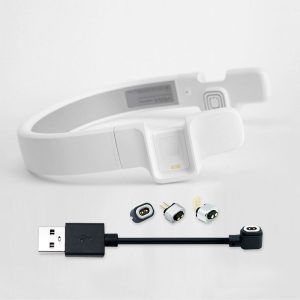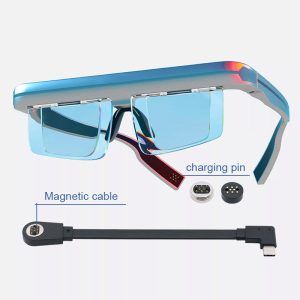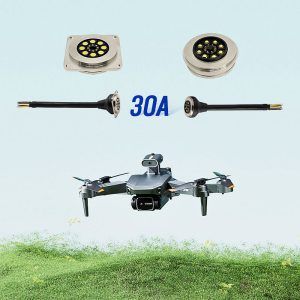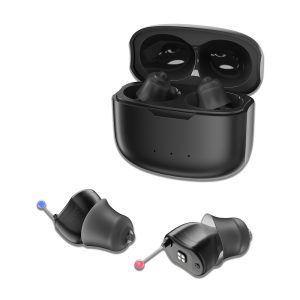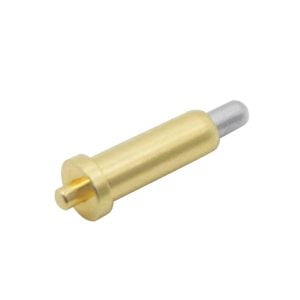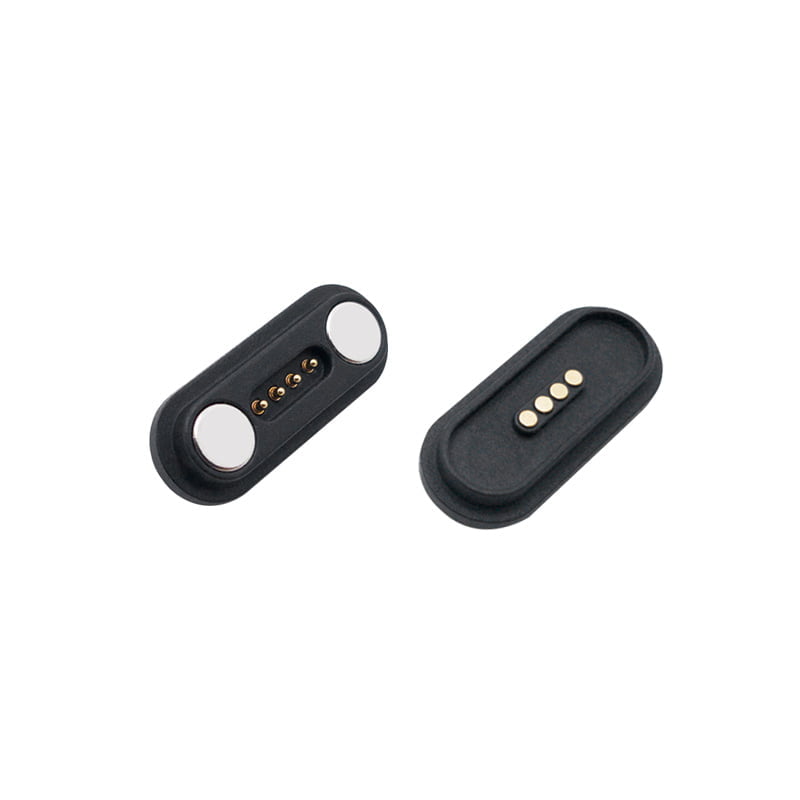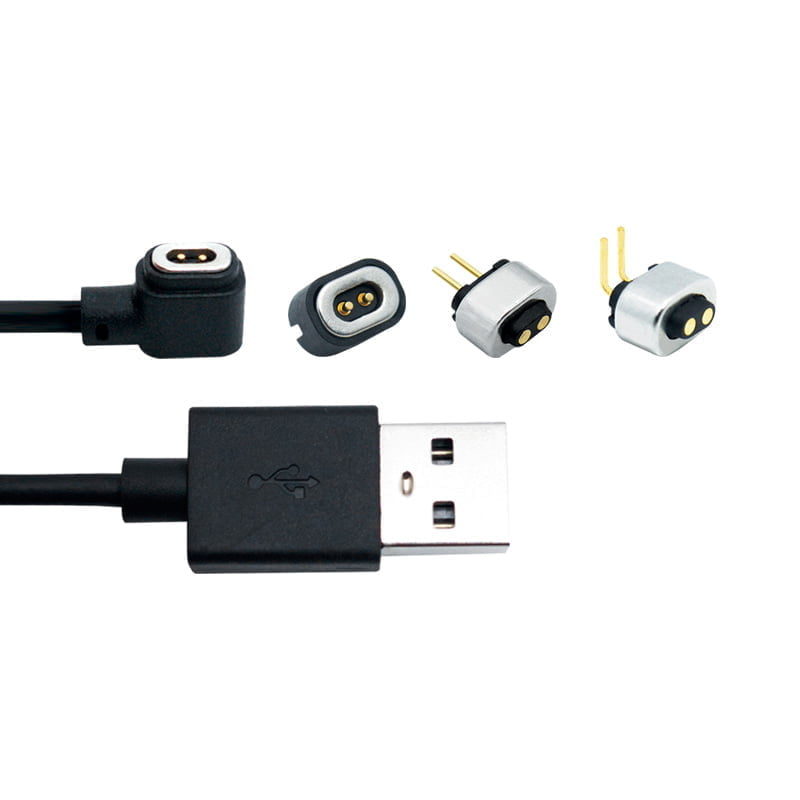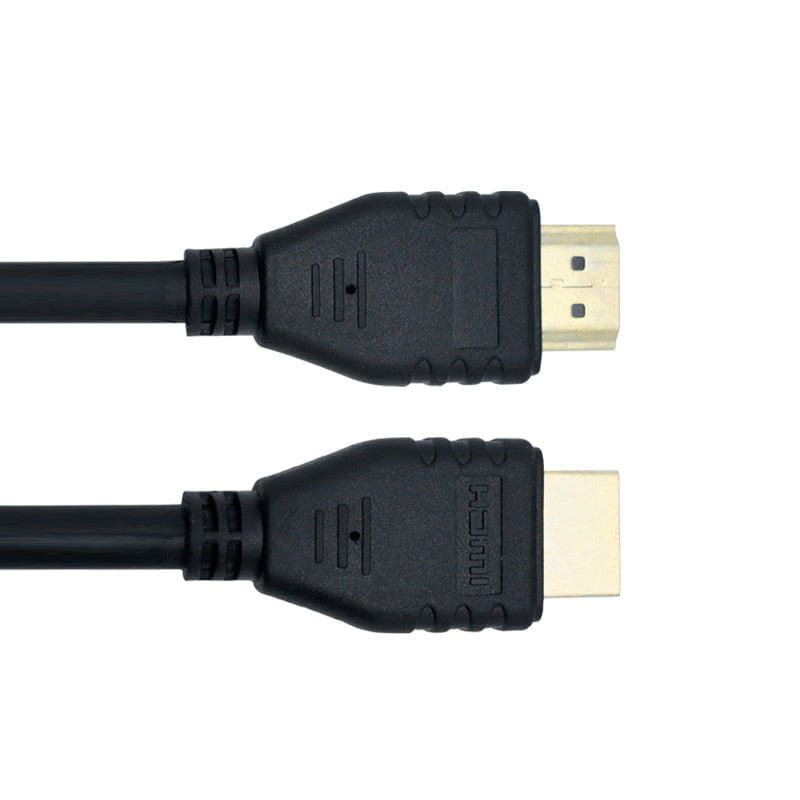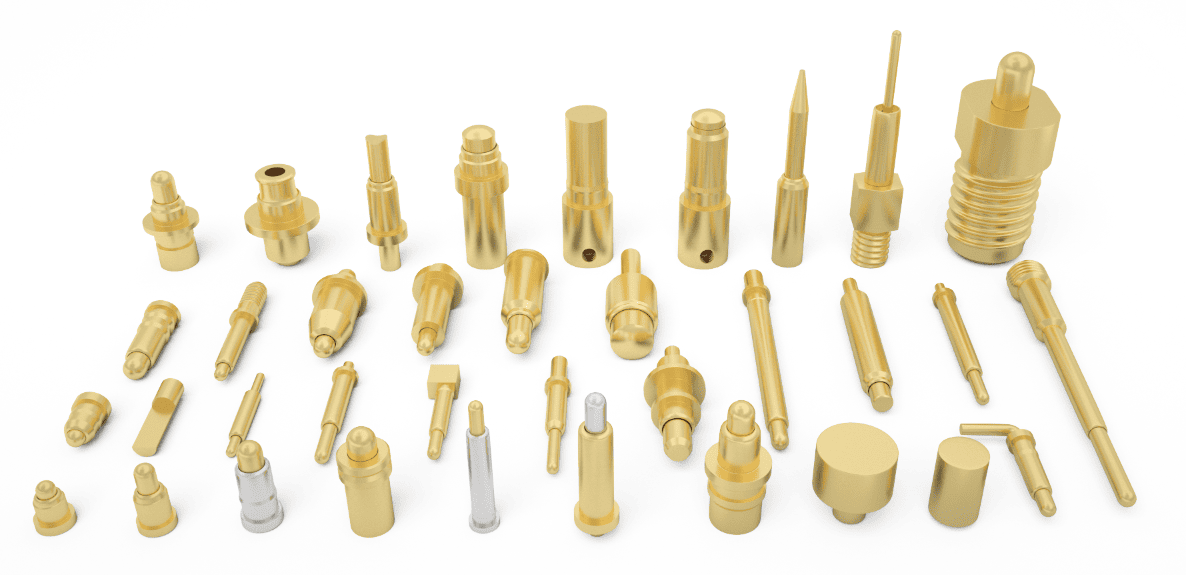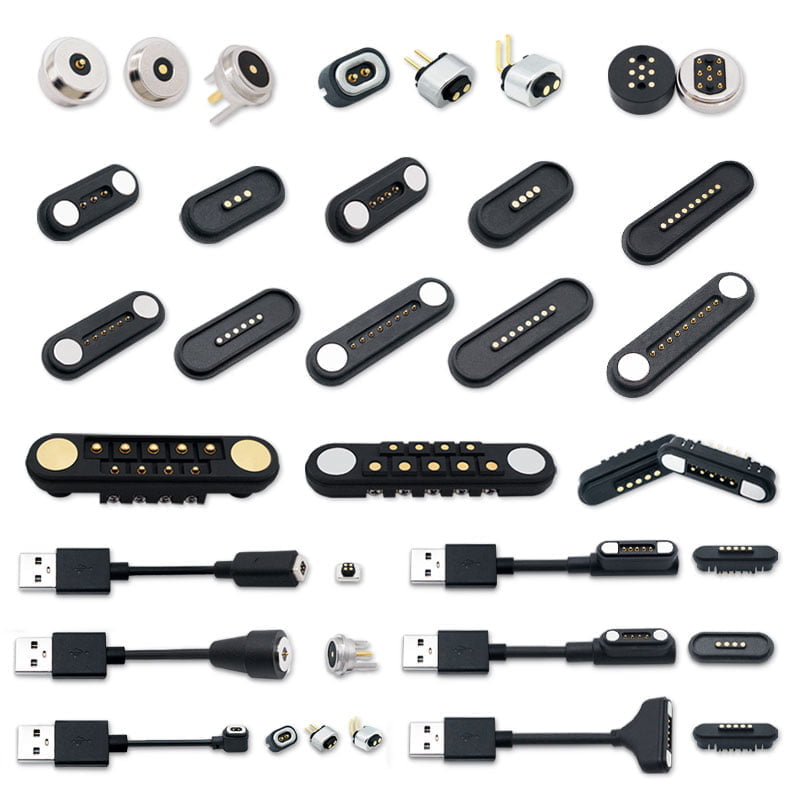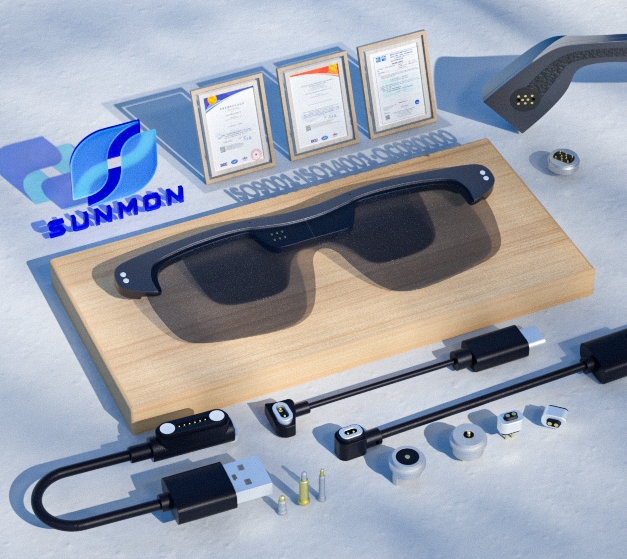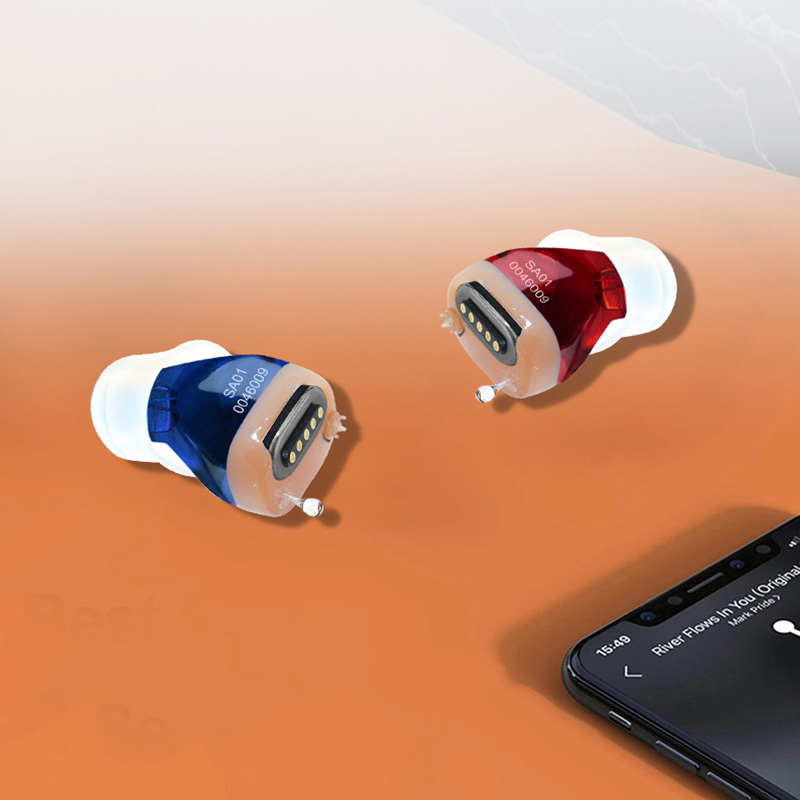What is a Pogo Pin?
A pogo pin (also called a spring-loaded contact or spring-loaded pin) is a small, precision electrical connector designed to create temporary yet highly reliable contact between two components.A pogo pin is a spring-loaded contact mechanism used to establish a temporary electrical connection between two points. It’s commonly found in applications like test fixtures, charging docks, and modular electronics.
It typically consists of:
Plunger – the moving tip that makes contact with the mating surface
Barrel – the outer housing that holds the plunger in place
Coil spring – applies constant spring force to ensure stable electrical contact
The barrel’s tip is often flanged or crimped to keep the plunger securely inside the housing. This design allows the coil spring to push the plunger outward, maintaining consistent pressure against the mating part, thereby creating a dependable electrical connection.
Pogo pins are commonly gold plated for low resistance and corrosion protection, and are usually made from copper alloys for durability. They are widely found in consumer electronics, medical devices, printed circuit boards, and bed-of-nails test fixtures.
What is a Pogo Pin Connector?
A pogo pin connector is an assembly that combines multiple pogo pins—often integrated within an insulating core—to create a complete connection interface.It is generally assembled with a spring needle and a rubber core to realize the combined function of the spring needle, and an electrical connection is established between the spring needle and the docking part.
By grouping pogo pins inside a molded housing, the connector enables combined functionality, such as simultaneous power delivery and data transfer.
When mated with the corresponding component, the pogo pins—secured and aligned by the core—are pressed against the target contacts. The coil springs inside each pin apply consistent force, establishing a stable electrical connection between the pogo pins and the mating part.
These connectors are widely used in consumer electronics, medical devices, printed circuit boards, and docking systems where quick, reliable, and repeated connections are essential.
Assembly Process of Pogo Pin Connectors
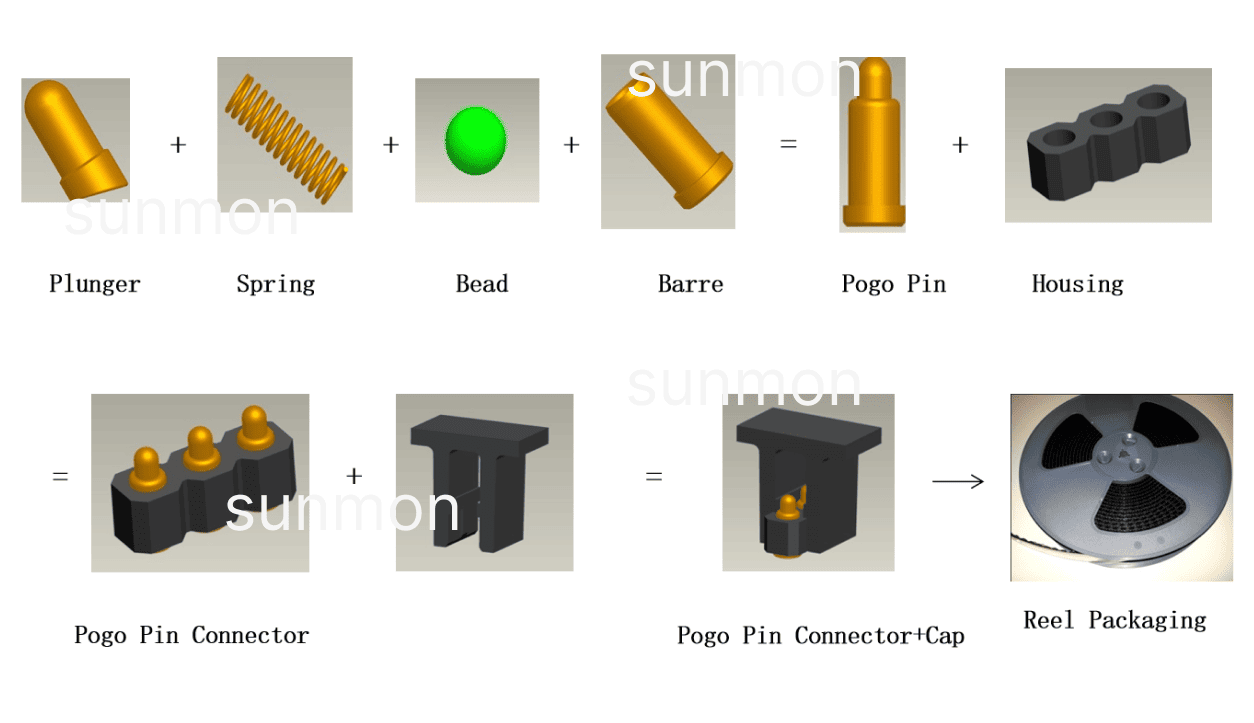
The assembly of a pogo pin connector involves multiple precise steps and components to ensure reliable electrical performance.
First, the basic pogo pin is assembled by combining four key parts: the plunger (the moving contact tip), the coil spring (providing contact force), a ceramic ball (which guides smooth movement), and the barrel or needle tube (housing the components securely).
Next, these pogo pins are integrated with plastic insulator components, forming the full pogo pin connector assembly. This step aligns multiple pogo pins in a stable configuration suitable for mating with counterpart connectors or device pads.
Finally, the assembled pogo pin connector can be combined with a plastic protective cap or housing, and then packaged—often in tape-and-reel format for automated manufacturing and assembly. This complete packaging facilitates efficient pick-and-place mounting during surface-mount technology (SMT) production.
This layered assembly process ensures the pogo pin connector delivers consistent electrical contact, mechanical durability, and ease of installation in various applications.
Looking for the Perfect Pogo Pin?
Contact us today, and we’ll recommend the most suitable pogo pin model for your needs.
How Does a Pogo Pin Work?
Key Components:
Plunger (Contact Pin) – The top part that makes physical contact with the target surface (usually gold-plated for better conductivity).
Spring – Provides mechanical pressure to maintain a reliable connection.
Barrel (Housing) – A hollow tube that holds the plunger and spring in place.
Base (Tail) – The soldered or press-fit end that connects to a PCB or wire.
How It Works:
Compression – When the pogo pin is pressed against a conductive pad or surface, the plunger retracts into the barrel, compressing the spring.
Electrical Contact – The spring ensures constant pressure, keeping the plunger in firm contact with the mating surface for a stable electrical connection.
Retraction – When pressure is removed, the spring pushes the plunger back to its original position, breaking the connection.
Common Applications:
Test & Programming Jigs (for PCBs)
Battery Charging Contacts (e.g., smartwatches, drones)
Modular Electronics (quick-connect modules)
Consumer Devices (e.g., docking stations, wearables)
Common Pogo Pin Type

Pogo pins come in various shapes and tail designs to meet different electrical, mechanical, and assembly requirements. Below are the most common types:
- Flat bottom type pogo pins – Designed with a flat barrel bottom for stability and easy PCB soldering.
- Through-Hole Tail (Post Type) – Features a locating pin at the tail to prevent misalignment during PCB soldering, ensuring precise positioning.
- Right-Angle Tail (Bent Type) – The tail is bent to give designers more flexibility in space utilization.
- Double-Ended Pin – Dual-action design for board-to-board connections with greater alignment tolerance and flexibility.
- Solder Cup Tail (Wire Termination) – Ideal for cable-end applications, making it easy to solder wires directly.
- Side Solder Type – Designed for side-contact soldering, suitable for applications requiring lateral electrical contact.
- Threaded Tail – Equipped with a threaded end for mechanical fastening in addition to electrical connection.
- Custom Design – Special specifications can be tailored to meet unique requirements, including shape, plating, and spring force customization.
Looking for the Perfect Pogo Pin?
Contact us today, and we’ll recommend the most suitable pogo pin model for your needs.
Main Applications of Pogo Pins
Pogo pins are highly versatile electrical connectors used across a wide range of industries due to their durability, compact size, and reliable performance. The main application sectors include:
- Consumer Electronics – Used in laptops, tablets, smartphones, e-cigarettes, LED lighting, and other personal devices.
- Wearable Technology – Integrated into smart bands, smartwatches, TWS Bluetooth earbuds, and smart clothing for charging and data transfer.
- Smart Home Devices – Provides reliable connections in home automation systems, smart locks, and IoT appliances.
- Industrial Handheld Terminals – Used in portable scanners, testing instruments, and ruggedized communication devices.
- Aerospace – Applied in space-grade electronics requiring high reliability under extreme conditions.
- Aviation – Supports onboard electronics, cabin control systems, and in-flight entertainment devices.
- Medical Equipment – Ensures dependable performance in diagnostic devices, patient monitoring systems, and portable medical tools.
- Automotive Electronics & Industrial Systems – Found in electric vehicle charging interfaces, infotainment systems, sensors, and heavy-duty industrial electronics.
Pogo Pin Common Material Comparisons
Pogo pins come in various shapes and tail designs to meet different electrical, mechanical, and assembly requirements. Below are the most common types:
- Flat Tail (Flat Base) – Designed with a flat barrel bottom for stability and easy PCB soldering.
- Through-Hole Tail (Post Type) – Features a locating pin at the tail to prevent misalignment during PCB soldering, ensuring precise positioning.
- Right-Angle Tail (Bent Type) – The tail is bent to give designers more flexibility in space utilization.
- Double-Ended Pin – Dual-action design for board-to-board connections with greater alignment tolerance and flexibility.
- Solder Cup Tail (Wire Termination) – Ideal for cable-end applications, making it easy to solder wires directly.
- Side Solder Type – Designed for side-contact soldering, suitable for applications requiring lateral electrical contact.
- Threaded Tail – Equipped with a threaded end for mechanical fastening in addition to electrical connection.
- Custom Design – Special specifications can be tailored to meet unique requirements, including shape, plating, and spring force customization.
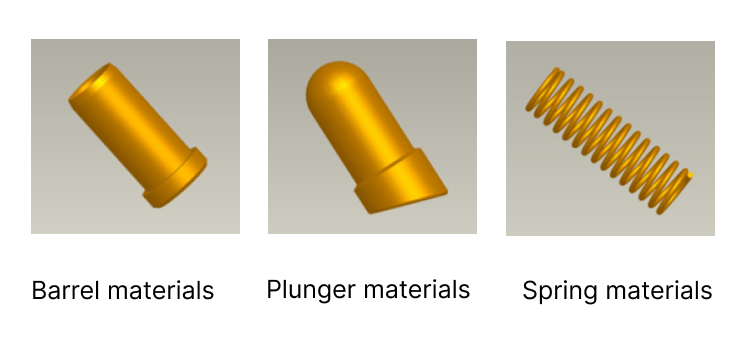
When designing pogo pins, engineers must carefully select materials for the barrel, plunger, and spring, as each component plays a different role in electrical conductivity, mechanical durability, and long-term reliability. The following section compares the most commonly used materials, highlighting their advantages, drawbacks, and ideal use cases.
Barrel Materials
For pogo pin barrels, brass is a cost-effective choice with good conductivity, making it a popular option for standard applications. Beryllium copper offers excellent electrical performance and low impedance, ideal for high-precision and high-reliability designs. Phosphor bronze is often chosen for high-frequency applications because of its excellent wear resistance and elasticity, especially when the barrel does not require heat treatment. While selective quenching can increase hardness, it also raises production costs, so this treatment is used only when necessary.
Plunger Materials
The plunger typically uses similar materials to the barrel — brass, beryllium copper, and phosphor bronze — but tool steel (SK4) is also a strong candidate. Tool steel offers superior hardness and is easier to machine, making it an excellent option when the plunger tip must maintain shape and integrity under repeated contact. Heat treatment is applied to SK4 to ensure a hard structure that resists wear. All these materials can be processed via CNC and cam-type lathes for high precision.
Spring Materials
Springs are usually made from high-carbon steel, such as music wire (SWP), known for its high tensile strength and long fatigue life. However, SWP is highly magnetic and prone to corrosion, and it can lose tension at elevated temperatures; therefore, surface treatments such as gold plating are applied before use. Stainless steel is a low-magnetic material with high corrosion resistance and excellent heat tolerance, making it a common choice for various environments. Beryllium copper provides excellent fatigue resistance and low impedance but has lower tensile strength, which makes it less ideal for small-diameter springs requiring high force.
Common Electrical Contact Materials for Barrel and Plunger
| Material | Advantages | Drawbacks |
|---|---|---|
| Phosphor Bronze | Good electrical conductivity, excellent corrosion resistance, easy to form, high wear resistance | More expensive than brass |
| Brass | Good conductivity, low cost | Lower elasticity |
| Beryllium Bronze | High mechanical strength, excellent conductivity, heat resistance, wear and corrosion resistance | Contains toxic beryllium, costly to refine, most expensive |
Spring Materials and Maximum Working Temperatures
| Material | 1 Hour Max Temperature | 24 Hours Max Temperature | Notes |
|---|---|---|---|
| Music Wire | 120 °C | 85 °C | High tensile strength, needs coating to prevent corrosion |
| Beryllium Copper | 205 °C | 120 °C | Excellent fatigue resistance, lower tensile strength |
| Stainless Steel | 260 °C | 180 °C | Low magnetism, high corrosion resistance, suitable for harsh environments |
FAQ
A pogo pin is a small, spring-loaded electrical connector designed to create reliable temporary contact between two devices. It consists of a barrel, plunger, and coil spring, which maintain constant pressure to ensure stable electrical connectivity.
Gold plating improves electrical conductivity, prevents oxidation, and reduces contact resistance. It also enhances durability in high-frequency and high-cycle applications, making it ideal for use in medical devices, consumer electronics, and harsh environments.
A pogo pin connector is used to connect printed circuit boards (PCBs), enable high-frequency signal transfer, charge devices, or facilitate automated testing (bed of nails).
Common materials include brass for cost-effective conductivity, phosphor bronze for high wear resistance and elasticity, and beryllium copper for superior strength, heat resistance, and corrosion resistance. Selection depends on electrical performance requirements, mechanical durability, and budget.
Phosphor bronze and beryllium copper are excellent for high-frequency applications due to their low electrical impedance, high conductivity, and wear resistance.
Yes. Pogo pins can be designed with different shapes (flat-bottom, right-angle, double-ended, threaded, etc.), materials, and spring forces to suit industries such as aerospace, automotive electronics, and medical devices.
Spring materials have different temperature limits. For example, music wire can handle 120 °C for short durations, stainless steel up to 260 °C, and beryllium copper up to 205 °C. The choice depends on the device’s operating environment.
In earbuds, pogo pins are used for charging and data transfer between the earbuds and their charging case. Their compact size, gold plating, and spring force ensure stable connections despite frequent docking cycles.

